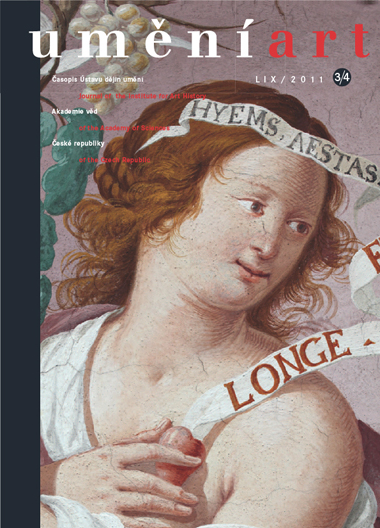Milan Pavlík
Proměna římsy v české architektuře po roce 1700. Kilián Ignác Dientzenhofer a Jan Blažej Santini
The article examines the transformation of the formal idiom in architecture in the Czech lands after 1700 based on the example of cornices designed by the architects Kryštof and Kilian Ignaz Dientzenhofer and the architect Johann Blasius Santini. The cornice is one of the most important components of a structure's composition; some researchers regard it as the emblem of the architect's style. After 1700, architecture in the Czech lands underwent an abrupt change. The cornice took on a strut-like shape, allowing the introduction of new elements. The earlier cornice designs can be seen, for instance, in a sample book belonging to Leonard Dientzenhofer, the brother of Kryštof Dientzenhofer, dating from 1697. The new cornice shapes were mostly influenced by ground plans based on interpenetrating shapes. These morphological variances opened up new possibilities for Baroque architects designing cornices with a new plasticity. Oldřich Stefan drew attention to this fact in his article 'The Principle of Plasticity in 17th- and 18th-Century Czech Architecture' published in Umění (1959). This text compares the cornices by Kilian Ignaz Dientzenhofer and Johann Blasius Santini. The former gravitated towards the multiplication of shapes, the latter, conversely, worked with numerous variations on the shape of a cavetto, allowing him to do away with the many support elements beneath the cornice; his was an abstractional technique. The most sublime example of this surprisingly is the 'Santiniesque' cornice inside the Church of St Margaret in Břevnov. However, a comparison with a cross-section of the Church of St Clare in Cheb reveals that the original design lodged in the Groenesteyn Archives in Kiedrich was altered in its applications in Břevnov, Cheb and Nová Paka. A comparison of the morphology of structures created by Kryštof Dientzenhofer suggests that he is not the author of the Church of St Margaret in Prague-Břevnov. This finding, however, reopens the entire issue of the authorship of the Guariniesque structures. Drawing on photogrammetric surveys, the author of the article concludes that these structures were designed by two or three architects.
Full-text in the Digital Library of the Czech Academy of Sciences:
https://kramerius.lib.cas.cz/uuid/uuid:df43c4cc-4d54-92fb-5de2-2097c1ed7ec7
< back

